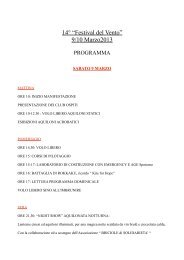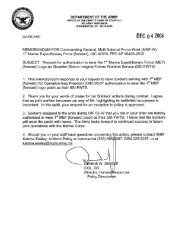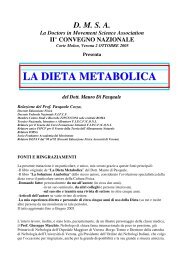Science vs. religion : what scientists really think - File PDF
Science vs. religion : what scientists really think - File PDF
Science vs. religion : what scientists really think - File PDF
You also want an ePaper? Increase the reach of your titles
YUMPU automatically turns print PDFs into web optimized ePapers that Google loves.
186 NOTES TO PAGES 4–77. Psalm 93:1, King James Version of the Holy Bible.8. The “God gene” refers to the idea that part of the reason why religious people arereligious is that they are genetically hardwired to be so. See Newberg, D’Aquili, andRause, Why God Won’t Go Away . See also Hamer, The God Gene . Some have respondedto public debates about <strong>religion</strong> and science by arguing that the two areas are in differentphilosophical domains, <strong>what</strong> evolutionary theorist Stephen Jay Gould has called nonoverlappingmagisteria. See, for example, Gould, “Nonoverlapping Magisteria.” For moreinformation about intelligent design, see Behe, Darwin’s Black Box . For a wonderful overviewof nearly everything about creationist challenges to evolution, see Numbers, TheCreationists . For broad statistics about levels of religious belief and practice in the UnitedStates, see Gallup and Lindsay, Surveying the Religious Landscape . For information abouthow levels of religiosity influence educational levels, see Eckberg and Nesterenko, “Forand Against Evolution,” and Ellison and Musick, “Conservative Protestantism and PublicOpinion toward <strong>Science</strong>.” Also see Pruett, “Silent Scientists,” for a discussion of why<strong>scientists</strong> have remained largely silent on issues having to do with the connectionsbetween <strong>religion</strong> and science.9. See Dye, Who’s Running America?10. Throughout the book, I introduced several different “characters.” Though theirnames are changed, these individuals are actual <strong>scientists</strong> whom I interviewed. Each oneis also representative of a group of <strong>scientists</strong> who held similar views. So quotations fromthe interviews, although direct quotes from a specific respondent, are also exemplary ofsentiments used by a group of <strong>scientists</strong>.11. While Arik, Evelyn, and Margaret are actual <strong>scientists</strong> I interviewed, they alsorepresent dominant groups of <strong>scientists</strong> and the way they approached <strong>religion</strong>. Thenuances of these groups will be discussed later in the book.12. Weber, The Sociology of Religion , 131–32 .13. For more discussion of concepts related to boundary work, see Lamont andFournier, Cultivating Differences . Later in the book we will return to a further discussionof boundaries. The concept of “boundaries” has many different connotations. Ido not mean to imply that <strong>religion</strong> and science are completely distinct for everyone.Some <strong>scientists</strong> saw them very much as overlapping categories, different from theNonoverlapping Magisteria (NOMA) that Stephen Jay Gould describes. See Gould,“Nonoverlapping Magisteria.”14. See Smith, The Secular Revolution ; Schmalzbauer, People of Faith ; and Schmalzbauerand Mahoney, Religion . Sociologist Christian Smith has called the secularization of theacademy an intentional movement. And David Hollinger has argued there is an activemovement to de-Christianize the academy, which he sees as a largely positive movement.See Hollinger, “Enough Already.”15. See, in particular, Bernstein, Class, Codes and Control . For more on lived <strong>religion</strong>,see Hall, Lived Religion in America . For more discussion of spirituality in Americansociety, see Roof, A Generation of Seekers and Spiritual Marketplace . See also Wuthnow,After Heaven . These volumes are notable exceptions, taking seriously the importance ofnew forms of spirituality outside of religious institutions.
















